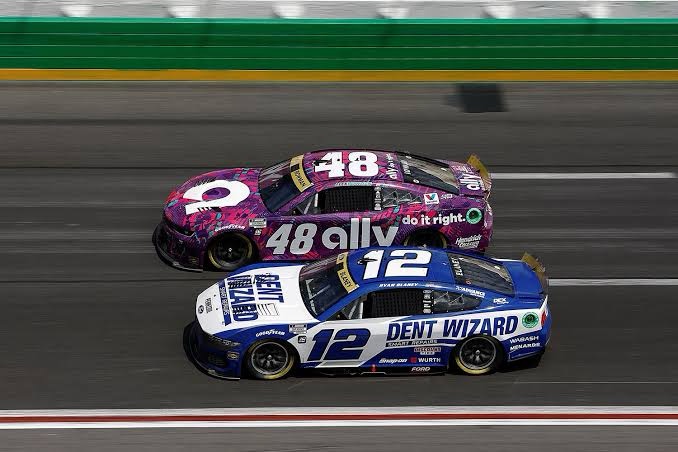In the high-stakes world of NASCAR, where every second counts and races can be decided by the slimmest of margins, the Damaged Vehicle Policy (DVP) plays a crucial role in determining the fate of drivers on the track. For Ford teams, navigating this policy has become a critical aspect of race day strategy, especially when accidents and collisions threaten their chances of staying in contention.
Understanding NASCAR’s Damaged Vehicle Policy
The Damaged Vehicle Policy, introduced by NASCAR in 2017, is designed to ensure safety on the track and limit the number of dangerously damaged cars continuing to race. Under the DVP, teams are given a limited six-minute window to repair their cars on pit road if they’ve sustained significant damage during a race. If repairs are not completed within that time, or if the car is deemed unsafe, the vehicle is disqualified and cannot return to the race.
This policy has had a profound impact on how teams approach repairs, and for Ford drivers competing in NASCAR, it’s no different.
Ford Teams and the Pressure to Perform
Ford Performance has a strong presence in NASCAR, with top-tier teams such as Team Penske, Stewart-Haas Racing, and Wood Brothers Racing flying the Ford flag. With fierce competition from manufacturers like Chevrolet and Toyota, Ford teams are constantly pushing the limits of speed and performance. But when accidents occur, the DVP adds an extra layer of pressure to an already intense environment.
For Ford drivers, who are often battling for crucial playoff points and positions, the six-minute window can feel like a ticking time bomb. One misstep in the repair process could mean the end of their race, and with that, the potential loss of valuable championship points.

The Impact on Race Strategy
The introduction of the Damaged Vehicle Policy has also influenced race strategies for Ford teams. In the past, crews had more freedom to make extensive repairs in the garage, giving drivers a chance to return to the track even after significant damage. Now, teams must weigh the risks of sending a damaged car back out or withdrawing from the race entirely if the car is deemed too unsafe.
Ford teams, known for their technical prowess, have adapted to this policy by refining their repair processes and enhancing communication between drivers, spotters, and pit crews. For example, teams like Penske and Stewart-Haas have implemented quick-response strategies to assess damage and maximize repair efficiency within the time limit. This approach minimizes downtime and gives their drivers the best possible chance to return to the race and compete.
High-Stakes Playoffs and the DVP
The stakes are even higher during the NASCAR playoffs, where Ford drivers like Joey Logano, Ryan Blaney, and Kevin Harvick are in contention for the championship. A single accident, coupled with the strict limitations of the DVP, could end their title hopes in an instant. With aggressive racing and contact inevitable during the playoffs, Ford teams must be prepared to handle damage swiftly, or risk elimination.
Harvick, in particular, has faced challenges under the DVP, with incidents in previous playoff races putting his championship hopes in jeopardy. Ford drivers have had to stay on high alert, knowing that the smallest mistake could result in a DNF (Did Not Finish) if the DVP’s repair window expires.
The Damaged Vehicle Policy has undeniably changed the landscape of NASCAR racing, forcing Ford teams and drivers to adapt in the face of adversity. While the policy ensures that only safe, competitive cars remain on the track, it has also added a new level of pressure for drivers vying for victory. Ford teams continue to innovate and fine-tune their strategies, working tirelessly to stay within the DVP’s strict guidelines while keeping their championship aspirations alive.
As the NASCAR season progresses, the Damaged Vehicle Policy will remain a crucial factor in the success of Ford’s top teams, determining whether they can overcome the odds and continue their pursuit of victory.


























































